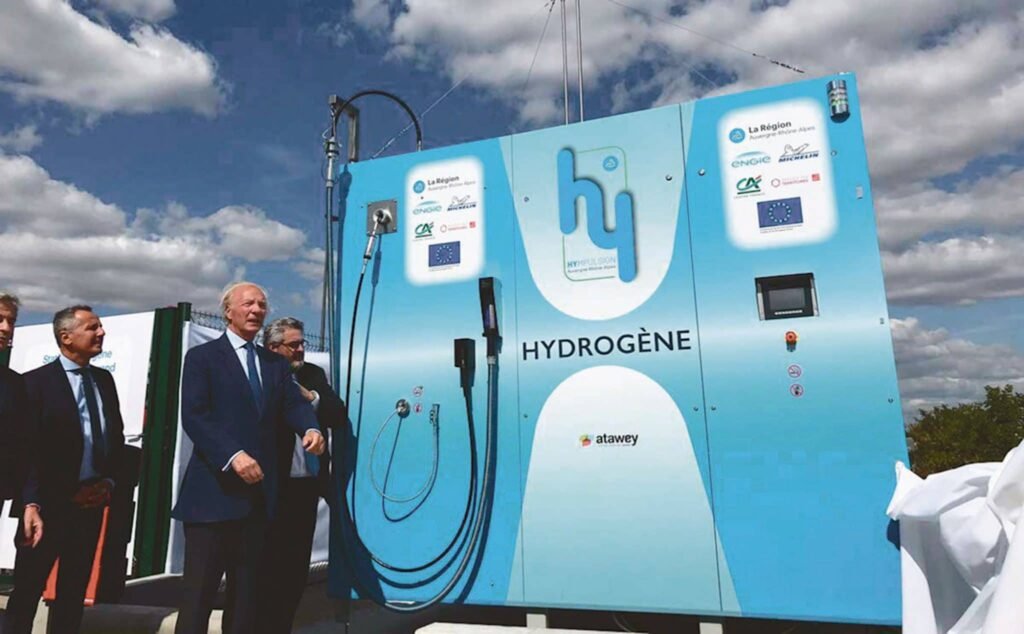Ports and airports are places where mobility and industry come together. It is therefore naturally in these sectors of intense economic activity that various projects around hydrogen have been developed. Other deployment projects often come from the desire of local elected officials combining the skills of cutting-edge companies. Some examples among others that you can find in the AFHYPAC Vig’hy maps.
Territorial projects, which often combine production and industrial use or mobility of hydrogen, are increasing. They are presented, as well as the actual achievements, on the Vig’hy site. Thus the SEM (mixed economy company) Eveer’hy’pôle d’Albi, created 10 years ago, supports the projects launched by the Occitanie Region as part of its “green hydrogen plan”. Endowed with 150 million euros for the period 2019–2030, it includes measures aimed at supporting and encouraging investment. If it works, Occitanie should have two production plants, 55 production and distribution stations, 10 electrolysers and put 3,250 hydrogen vehicles into service by 2030.
Winner of the national call for projects “Hydrogen Territories”, the company Hyport created by Engie Cofely and the Occitanie Region aims to develop green hydrogen with the implementation on the site of the Tarbes and Toulouse airports. a complete production and distribution chain of green hydrogen for a large part of the vehicles (5 buses, 80 taxis and 50 utility vehicles at least) which circulate on the airport platform. Three stations are planned in Toulouse.
Against pollution at the dock
The Provence-Alpes-Côte d’Azur region wants to fight against the pollution caused by emissions at the docks of cruise ships, while preserving economic activity. In fact, the latter do not stop their engines during a stopover, because they must ensure air conditioning, lighting and refrigeration. As a result, they continuously release harmful particles, particularly sulfur, permanently polluting the cities of Marseille, Nice and Toulouse.
This is why the region launched the “Zero Smoke Stopovers” plan, including the electrification of the platforms. Significant resources will be devoted to this plan, but the region wants shipowners to make efforts of their own. The sulfur contents of authorized fuel oils should be revised downwards.
Among the initiatives for the electrification of platforms, let us highlight the “hydrogen container”, equipped with a fuel cell, presented by Helion Hydrogen Power (formerly Areva) during the Hydrogen Days in Marseille. Areva’s energy storage activity is coming under the Helion Hydrogen Power brand, in order to take advantage of recognized experience and know-how in the field of hydrogen and fuel cells. Helion will therefore market several products intended for stationary applications (electric generators, emergency groups, hydrogen batteries) and heavy mobility (maritime, river and rail) such as this mobile container.
Stations, tanks and batteries
The three keys to hydrogen mobility are the deployment of refueling stations, fuel cells and tanks, with hydrogen operating under high pressure. In all these sectors, research and achievements are multiplying. Hydrogen stations in service or planned are multiplying, thanks to territorial initiatives supported by private companies. For example, the Auvergne region has just inaugurated a first hydrogen station in Clermont-Ferrand on a… Michelin site. The establishment of 20 stations by 2023 is planned by the joint company Hympulsion. The region plans to grant companies and administrations aid for the purchase of hydrogen vehicles, as these are more expensive.
The European H2ME project, supported by most of the leading hydrogen companies, has aimed since 2015 to deploy a real network of hydrogen refueling stations. Funded to the tune of 170 million euros, including 67 million euros by the European Horizon 2020 program, through the European public-private partnership FCH JU (Fuel Cells and Hydrogen Joint Undertaking), H2ME aims to achieve a total of 49 stations and 1,400 passenger vehicles and LCVs by 2022. These include the Pont de l’Alam, Orly and Pont de l’Alam stations. Loges-en-Josas used by the Hype taxi fleet.
Founded in 2012 and positioned at the time on isolated sites, Atawey has taken the turn towards hydrogen refueling stations and should have produced 18 autonomous hydrogen production stations from its workshop at the end of the year. hydrogen (see map). This Savoyard company plans to develop 33 stations in France between 2020 and 2023 (in Paris, Bordeaux, Lyon and Marseille) as part of a partnership with Akuo Energy, an independent French producer of renewable energy. They will power 400 hydrogen vehicles from JC Decaux, Galeries Lafayette and other users.
Fuel cell: the alliance
The alliance of Michelin, via its subsidiary Symbio, and Faurecia in a joint venture allows the partners to be leaders in the fuel cell sector. The complementarity of these players will allow the company to offer a wide range of hydrogen fuel cells that can equip light vehicles, heavy goods vehicles or boats. The two partners aim to hold 25% of a market estimated at 15 billion euros in 2030 and will work to improve the performance of the heart of hydrogen mobility, which is fuel cells. As for tanks, note that the French automotive supplier Faurecia will invest 25 million euros to open its global center of expertise on hydrogen tanks in Bavans (Doubs). Since the end of 2016, the Burgundy-Franche-Comté region has been labeled “Hydrogen Territory”. In this research and development center in Bavans, Faurecia will also work with the CEA in Grenoble and the FCLab in Belfort on fuel cell systems for automobiles.

